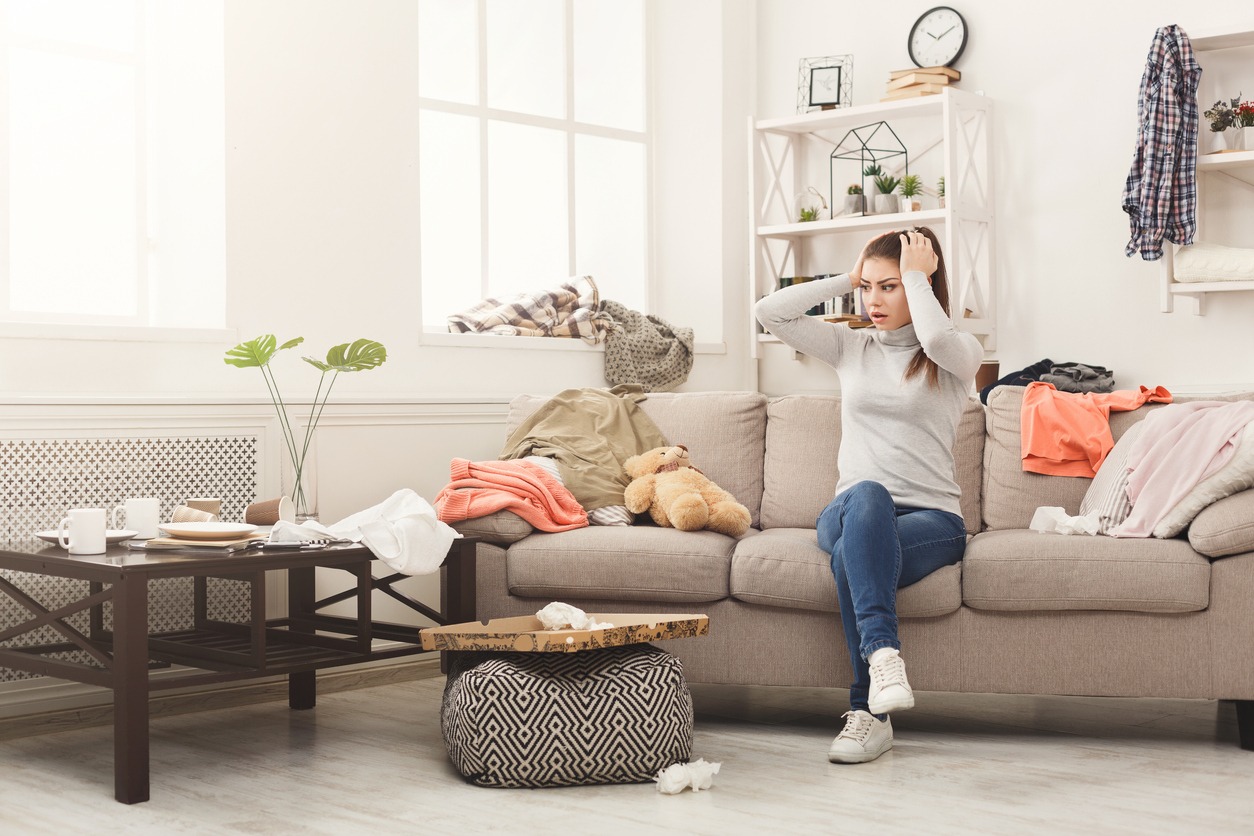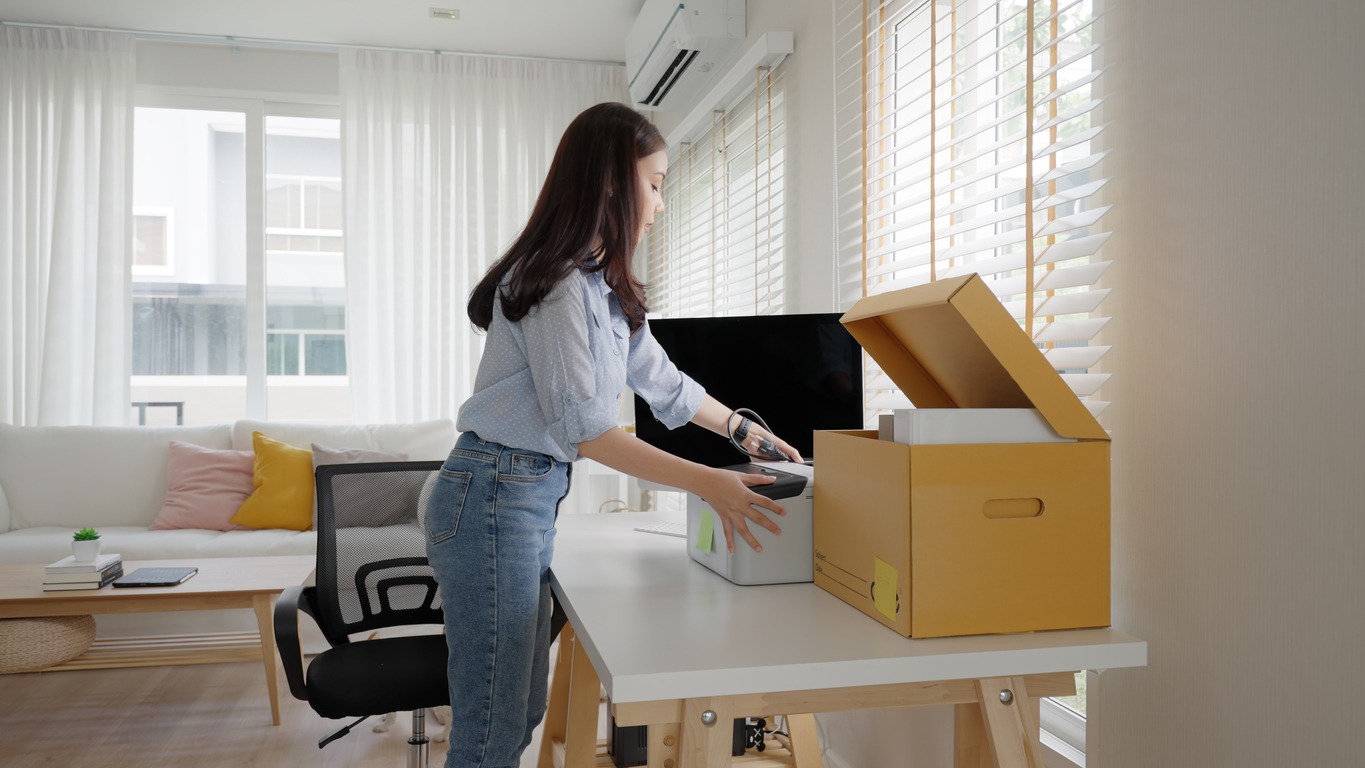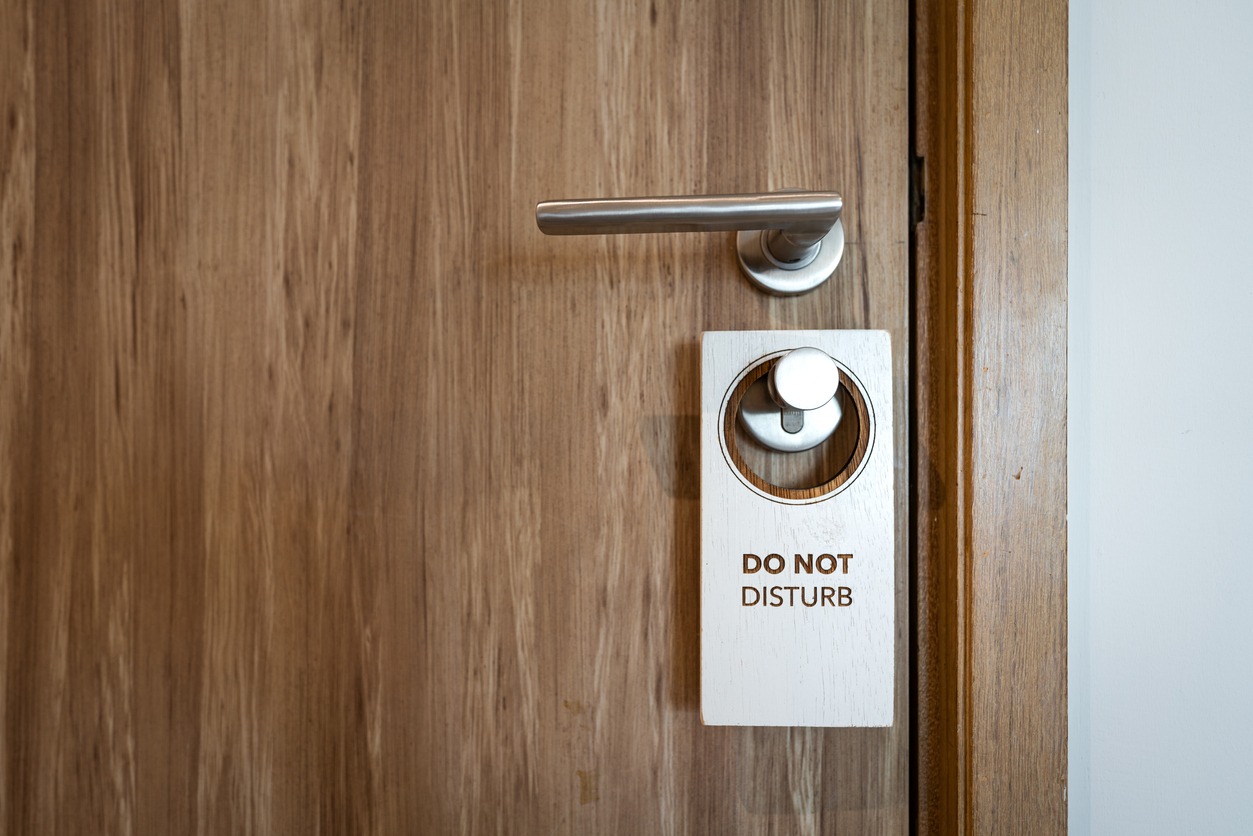Sharing a studio apartment might seem daunting at first glance. The thought of cramming two lives into a single room, where the kitchen, bedroom, and living area all occupy the same space, can raise more than a few eyebrows.
Yet, with cities becoming more crowded and rents soaring, this arrangement is becoming increasingly common, not just out of necessity but also as a lifestyle choice for those looking to simplify their lives or save money. The key to making it work lies not in the square footage you occupy but, in the creativity, communication, and compromise you bring into the space.
This article will explore how you can transform the challenge of limited space into an opportunity for unique living solutions, proving that with the right approach, sharing a studio apartment can not only be manageable but also enjoyable. Whether you are roommates, friends, or a couple, you’ll find that a little ingenuity and a lot of cooperation can turn a small space into a cozy, functional home.
Understanding the Challenges
Sharing a studio apartment comes with its unique set of challenges. Unlike traditional living arrangements, where roommates can retreat to their own rooms for privacy or quiet, studio apartments offer no such luxury. Recognizing and preparing for these challenges is the first step toward a harmonious living situation.
- Limited Personal Space and Privacy: With no walls to separate living areas, personal space is minimal, making privacy a rare commodity. From the kitchen to the sleeping area, all amenities are shared, leaving little room for personal belongings and activities.
- Managing Different Schedules and Lifestyles: If one person is a night owl and the other an early bird, finding a balance can be difficult. Also, differing habits, such as one person enjoying social gatherings at home while the other prefers quiet and solitude, can lead to friction.
- Sharing Responsibilities and Expenses: Deciding who does what and when, from cleaning to grocery shopping, requires clear communication. Splitting rent, utility bills, and other shared expenses fairly can also be a delicate matter, especially if one roommate uses more resources than the other.
Understanding these challenges is crucial, but it’s also important to approach them with a positive mindset. Viewing them as opportunities for growth and learning can transform your living situation from a potential source of stress to an enriching experience. Open communication, respect for each other’s needs, and a willingness to compromise are essential ingredients for making shared studio living work.
Setting Ground Rules
Establishing ground rules is a cornerstone of harmonious studio apartment sharing. These guidelines help prevent misunderstandings and ensure that both residents feel respected and comfortable in their shared space.
- Open Communication: Begin by openly discussing each person’s needs, expectations, and pet peeves. This foundational conversation can set the tone for your living arrangement. Keep the lines of communication open for any issues or changes that might arise. Regular check-ins can help avoid the buildup of unspoken grievances.
- Agreements on Guests and Noise: Agree on guidelines for having guests over, including how often and how late they can stay. This ensures that both roommates feel their privacy and comfort are respected. Set expectations regarding noise levels, especially during late hours or early mornings. This might include guidelines for using headphones for music or TV and minimizing noise when one person is sleeping.
- Shared Space Usage: Discuss how to organize personal items to avoid clutter and encroachment on each other’s space. Decide how common areas will be used, ensuring that both roommates have equal access to the space and its amenities.
- Cleaning Schedule and Responsibilities: Create a schedule for regular cleaning tasks, dividing them fairly based on each person’s preferences and availability. Determine how cleaning supplies and other communal items will be funded and replenished.
- Financial Arrangements: Clearly outline how rent, utilities, and other shared expenses will be split. Consider setting up a joint account or a digital payment plan for easier management. Agree on a process for handling unexpected costs, such as repairs or replacements of shared items.
The Importance of Flexibility
While ground rules are essential, flexibility and understanding are just as important. Life is unpredictable, and the ability to adapt and compromise is key to living harmoniously in a shared studio apartment. Remember, the goal is to create a living environment where both roommates feel comfortable, respected, and at home.
Maximizing Space
In a studio apartment, every inch counts. Making the most of your limited space is crucial for comfort, functionality, and maintaining a sense of personal area within the shared environment. Here are some strategies to help you and your roommate maximize your studio space effectively.
- Shelving Units: Install shelves to store books, decor, and other items off the floor, keeping your living space open and clutter-free.
- Hanging Solutions: Use hooks and hanging organizers in the kitchen, bathroom, and by the entrance to keep essentials accessible but out of the way.
- Convertible Pieces: Invest in furniture that serves multiple purposes, such as a sofa bed, a coffee table with storage, or a dining table that can double as a workspace.
- Loft Beds: Consider a loft bed to maximize vertical space, using the area underneath for a desk, couch, or storage.
- Under-Bed Storage: Utilize the space under the bed with storage bins or drawers for out-of-season clothing, extra bedding, and other seldom-used items.
- Organizational Accessories: Use drawer dividers, storage boxes, and other organizational tools to keep belongings tidy and make the most of every storage area.
- Rugs and Mats: Use rugs to visually separate different areas of the apartment, such as the sleeping area from the living space.
- Furniture Placement: Arrange furniture strategically to create distinct zones for eating, sleeping, and socializing, even in a single open space.
Maximizing space in a shared studio apartment requires creativity, flexibility, and collaboration. By making smart furniture choices, utilizing vertical space, and defining separate zones, you can create a functional and comfortable living environment. Remember, the goal is to ensure that both roommates can enjoy their shared space to the fullest despite the limited square footage.
Personalizing Shared Spaces
Creating a cohesive and welcoming environment in a shared studio apartment involves blending the personal tastes and preferences of each occupant. Personalizing your shared space not only makes it feel more like home but also strengthens the sense of partnership and mutual respect between roommates. Here’s how you can achieve a harmonious blend of styles and make the most of your shared studio.
- Shared Vision: Start by discussing your individual preferences, favorite colors, and any must-have decor items. Finding common ground or complementary styles can set a unified direction for decorating your space.
- Decor Planning: Create a mood board together, gathering inspiration that appeals to both of you. This collaborative approach ensures that the final decor reflects a blend of both personalities.
- Temporary Touches: Choose decorations that are easy to change, such as removable wall decals and art prints that can be swapped out, and throw pillows in various patterns and colors. This allows for easy updates without major commitments.
- Personal Items: Allocate spaces where each person can display personal mementos, photos, or artwork, ensuring that everyone’s individuality is represented in the shared space.
- Room Dividers: Use bookshelves, curtains, or folding screens to create semi-private areas, allowing for a sense of personal space without permanent modifications.
- Individual Zones: Even in a shared studio, it’s important to have small areas designated as “yours” and “mine.” This could be as simple as individual side tables, distinct wall shelves, or separate storage bins.
- Joint Purchases: Consider pooling resources for key pieces that improve the functionality and aesthetics of your shared space, such as a quality sofa or an efficient storage system.
- Respecting Choices: Even if one roommate’s choice doesn’t perfectly align with the other’s taste, finding a way to incorporate it respectfully can strengthen the living relationship.
While it’s important to create a cohesive look, maintaining a sense of individuality is crucial for personal well-being. Openly discussing and respecting each other’s need for self-expression within the shared space can prevent feelings of being overwhelmed or lost in the collective aesthetic.
Privacy Solutions
In a shared studio apartment, carving out private spaces is essential for maintaining personal boundaries and ensuring a comfortable cohabitation experience. Here are several effective strategies to enhance privacy without sacrificing the openness and functionality of your shared living space.
- Room Dividers: Freestanding room dividers or bookcases not only separate living areas but also provide additional storage options. Choose designs that complement the apartment’s overall aesthetic.
- Curtains and Screens: Install ceiling-mounted curtains or folding screens to create flexible, movable barriers that can be opened or closed as needed, allowing for privacy without permanent structural changes.
- White Noise Machines: These can help mask conversations, music, and other sounds, creating a more private auditory environment.
- Headphones and Earplugs: Encourage the use of headphones for listening to music or watching videos, and keep earplugs handy for times when one roommate needs quiet.
- Defined Spaces: Even in a studio, defining specific areas as personal spaces can provide a sense of privacy. This could be a desk, a favorite chair, or a side of the bed.
- Privacy Screens: Small, lightweight privacy screens can be used to create a temporary private nook, ideal for changing clothes or enjoying a moment of solitude.
- Privacy Hours: Agree on certain times when one roommate has the apartment to themselves, whether for work, relaxation, or social calls. This can be especially helpful in maintaining a balance between togetherness and solitude.
- Visual Cues: Establish a system of visual cues, such as a sign on the table or a specific light, indicating when one roommate needs privacy, even in a shared space.
- Communication: Regularly discuss and respect each other’s privacy needs, making adjustments as necessary to accommodate changing schedules and preferences.
Often, a combination of these solutions will be the most effective in creating a sense of privacy in a shared studio. For instance, using curtains to visually separate the space while also establishing quiet hours can provide both visual and auditory privacy.
Making the Most of Shared Living
Living in a shared studio apartment can be an enriching experience that goes beyond mere cohabitation. It’s an opportunity to build a unique partnership, learn from one another, and create a shared life that is greater than the sum of its parts. Here are some ways to embrace the shared living experience and make the most of it.
1. Embracing the Social Aspect
Regularly plan activities that both roommates enjoy, such as movie nights, cooking sessions, or workout routines. This not only strengthens the bond but also makes the living situation more enjoyable. Living in close quarters means you can easily become each other’s support system, offering a listening ear or a helping hand when needed.
2. Learning and Growth
Share skills and hobbies with each other. If one roommate excels at cooking and the other at organization, teach each other what you know. The compromises and adjustments required in shared living situations can foster significant personal growth, teaching patience, flexibility, and empathy.
3. Economic Benefits
One of the practical advantages of shared living is the ability to split expenses, making it a financially savvy option in expensive housing markets. Pool resources for quality-of-life improvements in your shared space, such as better furniture or entertainment options, which might not be feasible individually.
4. Creating Memories
Consider creating a shared album or bulletin board where you can post photos, ticket stubs, and other memorabilia from experiences shared in and out of your apartment. Acknowledge and celebrate each other’s personal milestones, such as birthdays, promotions, or personal achievements, to foster a sense of camaraderie.
5. Maintaining Respect and Boundaries
Always maintain a respectful attitude towards each other’s personal space, belongings, and time. This mutual respect is the foundation of a positive shared living experience. Keep the lines of communication open for discussing any issues or concerns, ensuring a healthy, transparent living environment.
By focusing on the social and economic benefits, fostering personal growth, and building a supportive and respectful partnership, roommates can turn their shared studio into a happy, harmonious home. Remember, the key to a successful shared living experience lies in finding joy in the journey and appreciating the unique bond that forms when people come together to make the most of their shared space.
Conclusion
Sharing a studio apartment can be a rewarding experience with the right approach. By embracing open communication, establishing clear ground rules, maximizing the available space, personalizing your shared environment, finding privacy solutions, and making the most of the communal living experience, you can turn a small space into a cozy, functional home.
Remember, the success of sharing a studio lies in the balance between respecting individual needs and celebrating the shared journey, turning potential challenges into opportunities for growth and connection.






